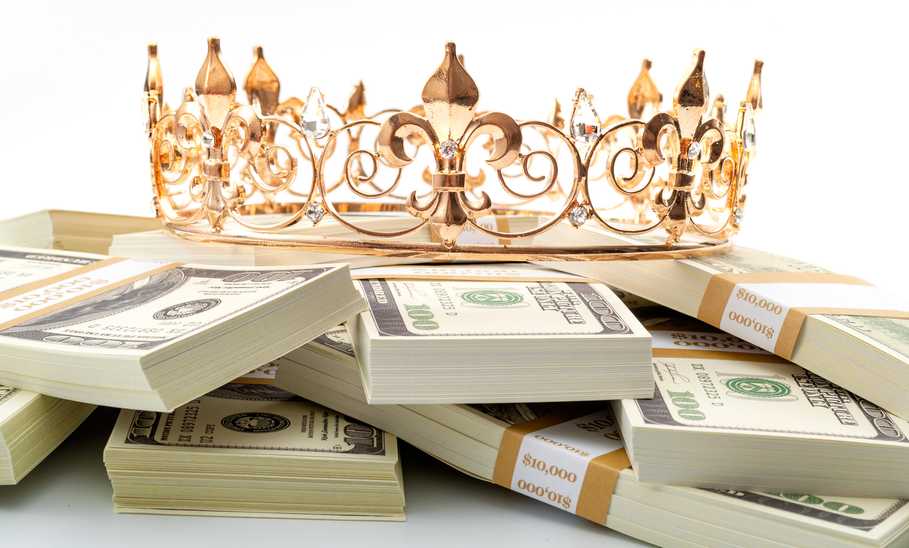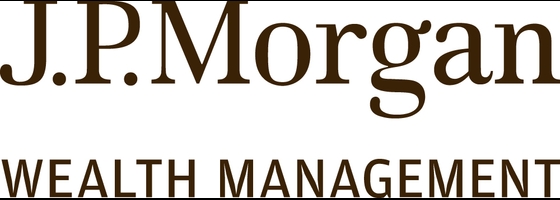Dividend Kings List 2024: The Most Elite Group of Dividend-Paying Stocks

Our evaluations and opinions are not influenced by our advertising relationships, but we may earn a commission from our partners’ links. This content is created by TIME Stamped, under TIME’s direction and produced in accordance with TIME’s editorial guidelines and overseen by TIME’s editorial staff. Learn more about it.
A dividend stock is a publicly traded company that shares its profits with shareholders through dividends, typically paid quarterly. Dividend-paying stocks can be an attractive option for investors wanting a steady income (even in a bear market) or a long-term wealth-growing strategy.
Steady dividend payers tend to be well-established, consistently profitable companies. No companies exemplify these features more than the dividend kings: An exclusive group of stocks that have increased dividends for at least 50 consecutive years.
That's no small feat considering that in the last five decades alone, these companies have raised and paid dividends through seven recessions, an oil embargo (1973-74), double-digit interest rates (the 1980s), Black Monday (1987), 9/11, the dot-com bubble (1999-2000), the 2008 financial crisis, the Coronavirus Crash of 2020, and more.
Here's what you need to know about dividend kings if you're interested in stocks with staying power.
INVESTMENT AND INSURANCE PRODUCTS ARE: NOT A DEPOSIT • NOT FDIC INSURED • NO BANK GUARANTEE • MAY LOSE VALUE
Dividend kings are an elite group of stocks that have increased their dividends every year for at least 50 years in a row. Not surprisingly, a relatively small number of companies ever reach this benchmark. Out of more than 4,000 public companies in the U.S., just 54 make the cut in 2024, including five newly minted dividend kings: Archer Daniels Midland (ADM), Fortis (FTS), Kenvue (KVUE), RPM International (RPM), and United Bankshares (UBSI).
We used multiple sources to compile this year’s list, including each company's name, ticker symbol, dividend yield, market capitalization, and "winning" streak in years:
| Name | Ticker | Sector | Dividend Yield | Market Cap | Streak (years) |
|---|---|---|---|---|---|
3M | MMM | Industrials | 5.51% | $59.72B | 65 |
Abbott Laboratories | ABT | Healthcare | 1.94% | $197.77B | 52 |
Abbvie Inc | ABBV | Healthcare | 3.61% | $286.72B | 52 |
ABM Industries Inc. | ABM | Industrials | 2.12% | $2.64B | 56 |
Altria Group Inc. | MO | Consumer goods | 9.42% | $73.12B | 54 |
American States Water Co. | AWR | Utilities | 2.22% | $2.91B | 69 |
Archer Daniels Midland Co. | ADM | Industrials | 2.59% | $37.10B | 50 |
Becton Dickinson & Co. | BDX | Healthcare | 1.62% | $68.41B | 52 |
Black Hills Corporation | BKH | Utilities | 4.63% | $3.64B | 52 |
California Water Service Group | CWT | Utilities | 2.15% | $2.81B | 55 |
Canadian Utilities Ltd. | CDUAF | Utilities | 5.33% | $6.44B | 51 |
Cincinnati Financial Corp. | CINF | Financials | 2.77% | $16.85B | 63 |
Coca-Cola Co | KO | Consumer goods | 3.08% | $261.09B | 61 |
Colgate-Palmolive Co. | CL | Consumer goods | 2.38% | $66.62B | 61 |
Commerce Bancshares, Inc. | CBSH | Financials | 2.04% | $6.90B | 54 |
Dover Corp. | DOV | Industrials | 1.38% | $20.58B | 68 |
Emerson Electric Co. | EMR | Industrials | 2.22% | $54.22B | 67 |
Farmers & Merchants Bancorp | FMCB | Financials | 1.59% | $807.43M | 58 |
Federal Realty Investment Trust. | FRT | Real estate | 4.28% | $8.40B | 56 |
Fortis Inc. | FTS | Utilities | 4.27% | $26.91B | 50 |
Genuine Parts Co. | GPC | Consumer goods | 2.75% | $19.46B | 67 |
Gorman-Rupp Co. | GRC | Industrials | 2.18% | $865.19M | 51 |
H.B. Fuller Company | FUL | Materials | 1.04% | $4.23B | 54 |
Hormel Foods Corp. | HRL | Consumer goods | 3.56% | $17.39B | 58 |
Illinois Tool Works, Inc. | ITW | Industrials | 2.20% | $76.31B | 59 |
Johnson & Johnson | JNJ | Healthcare | 2.95% | $390.92B | 61 |
Kenvue Inc | KVUE | Consumer goods | 3.65% | $41.19B | 61 |
Kimberly-Clark Corp. | KMB | Consumer goods | 3.81% | $41.96B | 51 |
Lancaster Colony Corp. | LANC | Consumer goods | 2.15% | $4.72B | 61 |
Leggett & Platt, Inc. | LEG | Industrials | 7.18% | $3.39B | 52 |
Lowe's Cos., Inc. | LOW | Consumer goods | 2.00% | $125.90B | 60 |
Middlesex Water Co. | MSEX | Utilities | 2.12% | $1.10B | 51 |
MSA Safety Inc | MSA | Industrials | 1.13% | $6.49B | 53 |
National Fuel Gas Co. | NFG | Energy | 3.97% | $4.63B | 53 |
Nordson Corp. | NDSN | Industrials | 1.09% | $14.35B | 60 |
Northwest Natural Holding Co | NWN | Utilities | 5.09% | $1.41B | 68 |
Nucor Corp. | NUE | Industrials | 1.28% | $41.52B | 51 |
Parker-Hannifin Corp. | PH | Industrials | 1.28% | $59.14B | 67 |
PepsiCo Inc | PEP | Consumer goods | 3.05% | $229.97B | 51 |
PPG Industries, Inc. | PPG | Industrials | 1.78% | $34.32B | 52 |
Procter & Gamble Co. | PG | Consumer goods | 2.50% | $354.95B | 67 |
RPM International, Inc. | RPM | Industrials | 1.73% | $13.81B | 50 |
S&P Global Inc | SPGI | Financials | 0.83% | $137.55B | 50 |
SJW Group | SJW | Utilities | 2.40% | $2.04B | 55 |
Stanley Black & Decker Inc | SWK | Industrials | 3.34% | $14.64B | 56 |
Stepan Co. | SCL | Industrials | 1.69% | $2.01B | 56 |
Sysco Corp. | SYY | Consumer goods | 2.68% | $38.21B | 53 |
Target Corp | TGT | Consumer goods | 3.10% | $65.05B | 55 |
Tennant Co. | TNC | Industrials | 1.26% | $1.69B | 53 |
Tootsie Roll Industries, Inc. | TR | Consumer goods | 1.04% | $2.31B | 56 |
United Bankshares, Inc. | UBSI | Financials | 4.05% | $4.90B | 50 |
Universal Corp. | UVV | Consumer goods | 5.26% | $1.48B | 53 |
W.W. Grainger Inc. | GWW | Industrials | 0.89% | $41.80B | 52 |
Walmart Inc | WMT | Consumer goods | 1.42% | $434.31B | 50 |
Companies that consistently grow their dividends have traditionally outperformed the broader market.
According to a report from RMB Capital, dividend kings delivered an annual average return of 9.62% from 1972 to 2018 versus a 2.40% return for non-dividend payers. At the same time, the equal-weighted S&P 500 index delivered an average return of 7.30%.
Still, dividend kings aren't necessarily a great investment for every investor. Some dividend kings will be overvalued at any time, while others will be undervalued. Instead of investing in a dividend king because it's part of an exclusive list of stocks, do your homework to ensure the company meets your criteria in terms of market cap, price-to-earnings (P/E) ratio, earnings per share (EPS), dividend yield, and other investing metrics.
Dividend kings are publicly traded companies, so you can buy and sell them just like any other stock through your online broker, robo-advisor, or financial advisor:
Find the right financial advisor with WiserAdvisor
Find the right financial advisor with WiserAdvisor
You can also invest in dividend kings indirectly via ETFs and mutual funds that hold some of the kings. While no ETF is dedicated to the dividend kings, some ETFs focus on dividend aristocrats (see below), such as the ProShares S&P 500 Dividend Aristocrats ETF (NOBL).
Two sectors represent 64% of dividend kings, with 15 consumer goods and 17 industrials earning a spot on the coveted list. There are also seven utilities, four financials, and four healthcare stocks, plus one each for the energy, materials, and real estate sectors.
Market capitalization ( market cap) refers to the total value of a company's shares of stocks. It's calculated by multiplying a stock's price by the total number of outstanding shares. For example, a company with 10 million shares selling at $100 a share would have a market cap of $1 billion. Market caps are often broken down into three "sizes":
Not surprisingly, more than half of the dividend kings are large-cap companies, with 29 companies valued at $10 billion or more—including nine valued higher than $100 billion. Fifteen mid-cap and six small-cap companies round out the list of 50 dividend kings for 2023.
In finance, survivorship bias happens when you include only the strong (or "surviving") assets to evaluate a portfolio's performance, ignoring any poor performers. By looking at just the winners and not the losers, the data can be skewed to overestimate a portfolio's return and make overly optimistic conclusions.
For example, consider a hypothetical mutual fund company with four funds. Two funds post 10% returns, while two are closed with 5% losses. If the fund manager presents the performance of all four funds, it will show an average return of 10%. However, if the manager ignores the two losers, the average return becomes 20%—an artificially high number.
You can avoid survivorship bias—and unrealistic forecasts—by including both the winners and the losers when evaluating portfolios.
To qualify as an aristocrat, a company must increase dividend payouts for at least 25 consecutive years (versus 50 years for kings) and be a member of the S&P 500—something that's not required for dividend kings. Additionally, dividend aristocrats must have a market cap of at least $3 billion and an average daily trading value of $5 million or more.
Dividend aristocrats can eventually become dividend kings if they reach 50 years of consecutive dividend raises.
The S&P 500 Dividend Aristocrats Index tracks the performance of dividend aristocrats. Currently, there are 67 companies in the index, including consumer staples (24.7%), industrials (23.3%), materials (12.4%), financials (10.6%), healthcare (9.9%), real estate (4.7%), consumer discretionary (4.6%), utilities (4.3%), information technology (3.1%), and energy (2.5%).
The index is rebalanced quarterly in January, April, July, and October.
Even among the best there are distinctions. We reached out to several industry experts for further information. Here are seven of their favorite dividend kings right now (listed in alphabetical order).
Pharmaceutical companies have very consistent sales with established treatments. Karl Farmer, CFA, V.P., and portfolio manager at Rockland Trust, says the biggest challenge is developing new products as older ones lose pricing power when patents expire, and other companies can make generic alternatives. "AbbVie has done an outstanding job with this, and the dividend continues to grow."
Farmer says that Colgate-Palmolive has a top share not only in the U.S. but also abroad. "They have done a great job managing through the raw materials price swings of the past few years and are still growing sales through volumes and a bit of pricing."
Sam Boughedda, an equity trader and stock market news writer at AskTraders.com, agrees. "The global consumer products giant is home to many brands we use daily. The growth of the company's pet food business, Hills Pet Nutrition, has caught the attention of investors in the last six months or so."
Johnson & Johnson has raised its dividend for well over 50 years, and the company owns many of the world's well-known brands—including Aveeno, BAND-AID, Motrin, Neutrogena, Johnson's Baby, and Tylenol. "Demand for the company's diversified products is always strong, while it has an exemplary track record," says Boughedda.
Jim Brown, CFA, MBA, senior portfolio manager, and research analyst for Buckingham Advisors, says PepsiCo is a diversified, all-weather company. "The company boasts a snack food division that thrived during the challenging pandemic period that favored at-home consumption—and a beverage unit that has benefited from increased fountain sales in dining and other establishments as consumers resumed away-from-home habits post-pandemic."
Daniel Milan, managing partner at Cornerstone Financial Services, is also bullish on PepsiCo. "They have an attractive annual dividend yield of about 2.77% currently with a strong historical dividend growth rate of about 7.74%, which means the dividend doubles about every nine years," says Milan. "In our opinion, dividend growth rate is as important as the dividend yield."
S&P Global provides independent ratings, benchmarks, analytics, and data to capital and commodity markets worldwide (the S&P 500 is maintained by S&P Dow Jones Indices, a division of S&P Global). The company has paid a dividend every year since 1937 and is one of fewer than 25 companies in the S&P 500 that's a dividend king. Farmer says S&P Global's yield isn't very high, but the company has excellent margins and an enviable track record.
Boughedda is also bullish on S&P Global. "The financial information and analytics business has raised its dividend for 50 consecutive years. It is a resilient business that faces limited competition in its industry."
Stanley Black & Decker is well-known for brands like Dewalt, Black+Decker, Craftsman, Stanley, and Troy-Bilt.
Farmer sees Stanley Black & Decker as a good buy right now. "The stock is off more than 50% in the last two years as it has fallen back to pre-pandemic levels." Farmer says sales growth has been difficult this year because many people took on home projects during the pandemic while spending more time at home. "The current price weakness offers a nice entry point and a 3.6% yield."
"Decades of offering low costs to its customers and, in turn, using volumes to negotiate prices with suppliers enabled this company to become what it is today," says Farmer. "Ninety percent of everyone in the U.S. lives within 10 miles of a store, and its fulfillment and distribution network has enabled them to compete in an online world as well."
Walmart is also on Boughedda's list of dividend kings to watch. "The company has a solid dividend track record that should continue to grow."
Dividend kings are stocks of mature companies that have proved their worth over time. To have earned that designation, a company must have paid its shareholders increasing dividends for at least 50 consecutive years. However, like any investment, it's recommended that you thoroughly evaluate each company you plan to invest in to ensure it has solid financials that meet your criteria. A robo-advisor or financial advisor can help if you don't have the time, experience, or interest in choosing your own investments.
At 9.42%, Altria has the highest dividend yield of the dividend kings in 2024. The next four highest dividend yields come from Leggett & Platt (7.18%), 3M (5.51%), Canadian Utilities (5.33%), and Universal 5.26%).
Dividend stocks tend to be less volatile than non-dividend payers, making them a good option during bear markets. Still, including dividend stocks in your portfolio can be wise any time as part of a well-diversified, wealth-building portfolio.
Dividend kings tend to outperform the market over the long term. However, like most stocks, they can and do underperform the market.
Dividend stocks have historically outperformed the S&P 500 with less volatility, making them an attractive option for investors who want to limit risk, especially as they near retirement. Still, like all investments, dividend kings aren't without risks.
For example, dividend payments aren't guaranteed, and companies can reduce or even eliminate their dividends from one quarter to the next. Also, dividend income is taxable, which could bump you into a higher tax bracket and increase your tax bill.
Interest rates can affect dividend stocks. When rates are high, CDs and Treasury bills can be better (and safer) investments than stocks. However, dividend stocks can be more attractive when rates are low because they typically pay better than low-risk investments.
Dividends income is taxable, but the tax rate depends on whether it's a qualified or nonqualified dividend. Qualified dividends are taxed at the lower long-term capital gains rate, while nonqualified dividends are taxed as ordinary income. If your dividend stocks are in a retirement account or college savings plan, you might not owe any tax on their dividend income since these accounts are tax-deferred or tax-free.
***INVESTMENT AND INSURANCE PRODUCTS ARE: NOT A DEPOSIT • NOT FDIC INSURED • NO BANK GUARANTEE • MAY LOSE VALUE***
The information presented here is created by TIME Stamped and overseen by TIME editorial staff. To learn more, see our About Us page.





